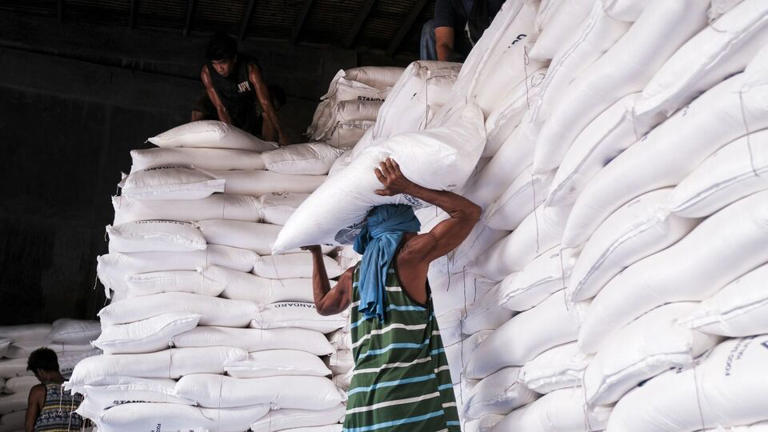Sugar export ban to remain in place despite comfortable supply in domestic market

The Centre maintains its ban on sugar exports despite ample supply, citing priorities like domestic consumption and ethanol blending. The Indian Sugar and Bio-Energy Manufacturers Association seeks relaxation for 2 million tonnes of exports. Officials highlight the importance of maintaining a three-month balance and uncertainties in future crops. The government focuses on ethanol production to meet its E20 target by 2025-26, aiming to reduce dependence on imported crude oil.
New Delhi: The Centre is not considering lifting its ban on sugar exports despite comfortable supply in the local domestic, as it prioritizes availability, sufficient opening balance and ethanol blending to meet its E20 target (20% ethanol mix with petrol) by 2025-26, two senior officials said.
India has placed an indefinite ban on sugar exports – first imposed in June 2022 – amid fears of poor crop and rising prices.
Seeking relaxation
This stand comes in the backdrop of the sugar industry lobby—the Indian Sugar and Bio-Energy Manufacturers Association (ISMA)—pitching for the Union government to allow 2 million tonnes (mt) of exports in the current marketing year ending September.
According to ISMA, sugar production in the 2023-24 (October-September) season is estimated to be 32 mt, including an extra 500,000-600,000 tonnes in Karnataka and Tamil Nadu, against a consumption of 28.5 mt, compared with last season’s production of 32.9 mt. This leaves room for the government to allow exports of 2 mt sugar after taking into account an opening stock of approximately 5.6 mt as of 1 October 2023 and a closing stock of 9.1 mt by 30 September 2024.
Different priority
However, one of the officials cited above said, “Though sugar production now seems comfortable, and we have sufficient stocks, we are not considering sugar exports as of today. Our priority is domestic consumption, sufficient balance for around three months followed by ethanol blending.”
Around 7 mt is projected to be the opening balance (as of 1 October 2024). This is based on rough calculations of domestic consumption for three months. Around 2.2-2.3 mt is consumed domestically each month; however, it goes up to 2.5 mt during the festival season like Diwali, Eid and Holi.”
“After assessing the sugar production and stocks, we allowed sugar mills to convert their existing stocks of 670,000 tonnes of B-heavy molasses into ethanol,” the official added.
Additionally, the government is unsure of the next season’s crop.
“There could be a challenge in sugarcane crop next year. There is so much uncertainty in this market that nothing can be predicted. We thought the crop would be less this season but that has not been the case. If we assume that the crop would be good next season and it turns out the opposite, then what?
The rainfall forecast until June is below normal but it will improve thereafter. The reservoir levels have been shrinking. The crop must survive until the arrival of monsoon. Irrigating dead plants is not going to yield any results. Somehow these things are challenging,” the other official said.
“Yes, we are now comfortable; there is no surplus production of sugar. If there were, we would have allowed it for ethanol blending.”
Queries sent to the agriculture, consumer affairs, food and public distribution ministries remained unanswered.
Ethanol shift
Amid concerns over sugarcane crops due to El Nino causing lower rainfall, the Centre on 7 December had directed sugar mills and distilleries to refrain from using sugarcane juice or sugar syrup for ethanol production in the current 2023-24 (November-October) ethanol supply year.
After a week, it revised its directive and allowed the use of both sugarcane juice and B-heavy molasses to divert 1.7 mt of sugar towards ethanol production. Last month, it allowed sugar mills to convert their existing stocks of 670,000 tonnes of B-heavy molasses into ethanol as the government was comfortable with the current level of sugar production relative to domestic consumption needs.
Ethanol, a 99.9% pure alcohol, is added to fuel to reduce the dependence on imported crude oil. Ethanol in India is primarily produced from sugarcane-based molasses and grain-based sources. Among these, B-heavy molasses is a major contributor, accounting for 60% of ethanol production, followed by sugarcane juice at 20%, while C-heavy molasses has a minor role.
India aims to meet its ambitious ethanol-blending targets—E15 by 2023-24 and E20 by 2025-26. At present, it stands at 12%.














